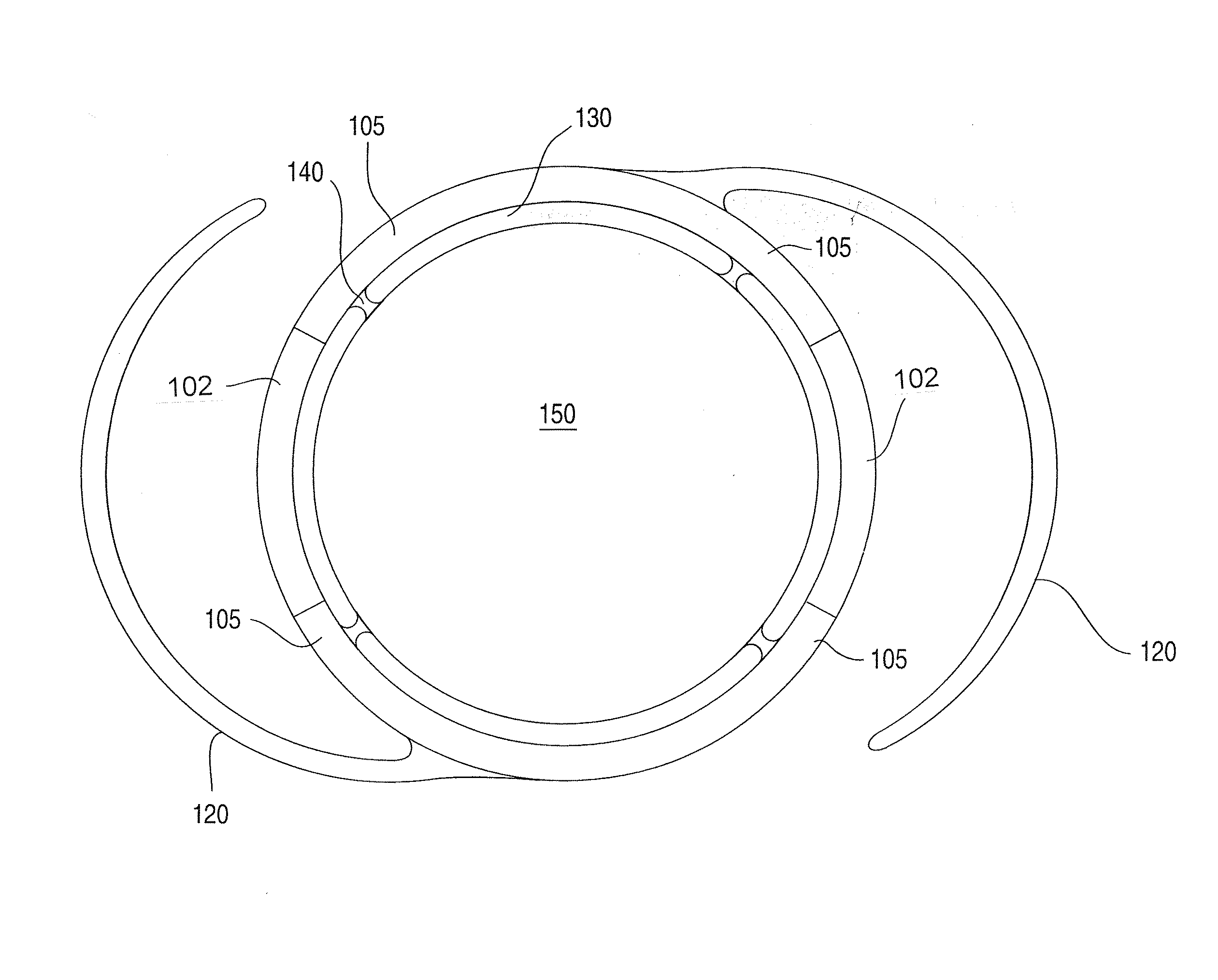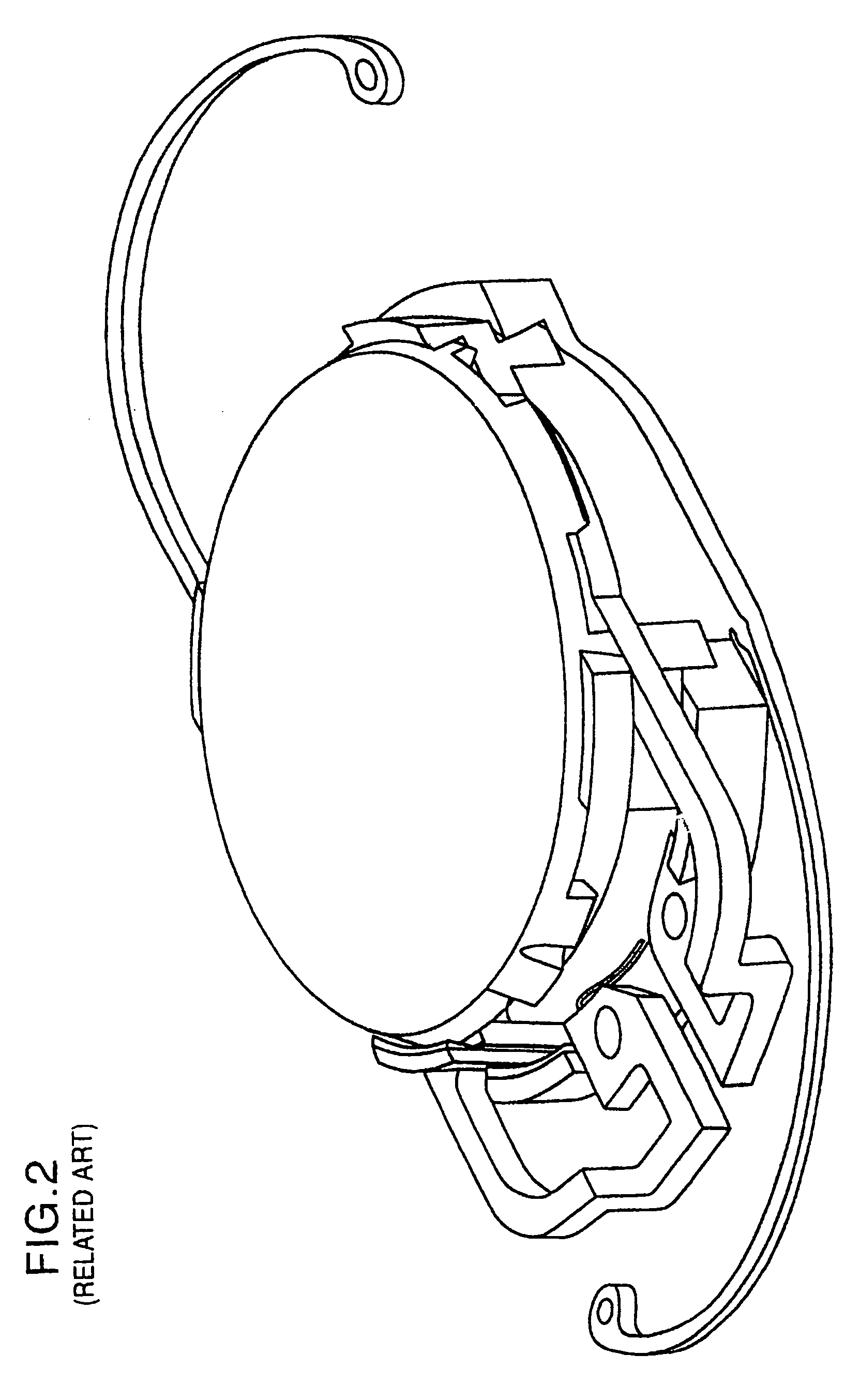Intraocular lens system
a lens system and intraocular technology, applied in intraocular lenses, medical science, prosthesis, etc., can solve the problems of corneal refractive surgery, lack of post-operative refractive accuracy, and current procedures and methods used by refractive surgeons may not meet the total refractive needs of patients,
- Summary
- Abstract
- Description
- Claims
- Application Information
AI Technical Summary
Benefits of technology
Problems solved by technology
Method used
Image
Examples
Embodiment Construction
[0052]FIG. 12 shows a top or plan view of the intraocular foldable base lens 100 in a preferred embodiment of the present invention. The base lens 100 is similar to the MC-IOL base lens illustrated in FIG. 3. The base lens 100 is preferably manufactured from acrylic or silicone materials, but the base lens 100 can be manufactured from any suitable foldable material. The base lens 100 has a diameter ranging from 1.00 to 8.00 millimeters, but preferably is between 5.50 and 6.50 millimeters, and has an optical aperture ranging from 3.0 millimeters to 7.0 millimeters, with a preferable optical aperture of 5.5 millimeters.
[0053]As mentioned above, the base lens 100 has a diameter ranging from 1.00 to 8.00 millimeters, and is preferably composed of foldable material. Accordingly, the insertion of the base lens 100 into the eye requires an incision therein which is less than half as large as the diameter of the base lens 100.
[0054]The base lens 100 attaches to the eye by at least one hapti...
PUM
 Login to View More
Login to View More Abstract
Description
Claims
Application Information
 Login to View More
Login to View More - R&D
- Intellectual Property
- Life Sciences
- Materials
- Tech Scout
- Unparalleled Data Quality
- Higher Quality Content
- 60% Fewer Hallucinations
Browse by: Latest US Patents, China's latest patents, Technical Efficacy Thesaurus, Application Domain, Technology Topic, Popular Technical Reports.
© 2025 PatSnap. All rights reserved.Legal|Privacy policy|Modern Slavery Act Transparency Statement|Sitemap|About US| Contact US: help@patsnap.com



